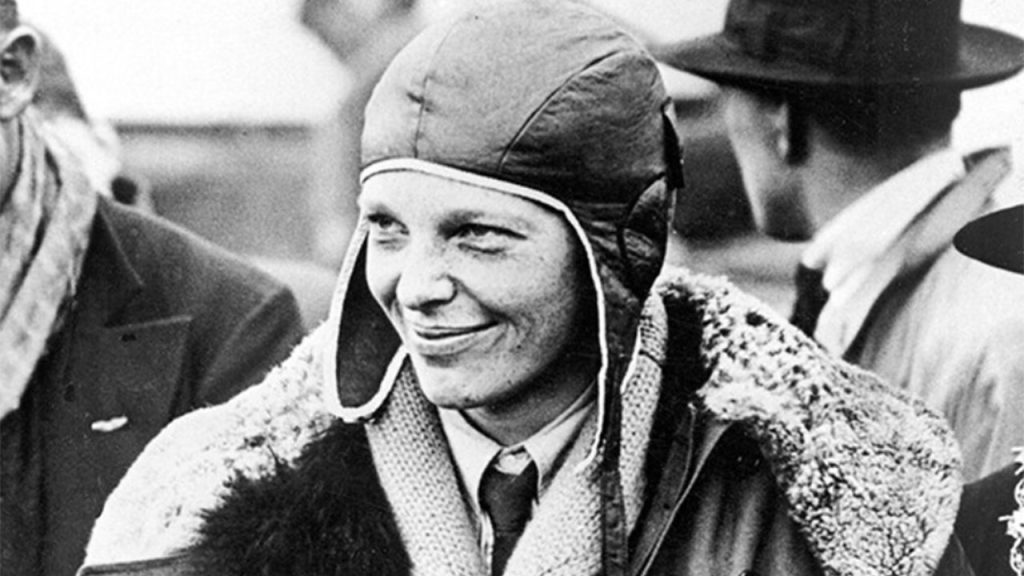On August 24, 1932, aviation pioneer Amelia Earhart made history by becoming the first woman to fly solo across the U.S. nonstop. Piloting her Lockheed Vega 5B from Los Angeles to Newark, she covered a distance of 3,986 kilometers in a record-breaking 19 hours and 5 minutes. This flight set an official U.S. record for women’s distance and time, showcasing Earhart’s incredible skill and determination. Less than a year later, she would go on to set a new transcontinental speed record, completing the same flight in just 17 hours and 7 minutes. Earhart continued to push boundaries in aviation, later becoming the first person to solo fly across the Pacific between Honolulu, Hawaii, and Oakland, California in 1935.
Born on July 24, 1897, in Atchison, Kansas, Earhart displayed an adventurous and independent nature from a young age. After taking her first airplane ride in 1920, she was inspired to take flying lessons. Two years later, she earned her pilot’s license and began pursuing her passion for aviation. Over the years, she set numerous aviation records and achieved several milestones, including piloting a seaplane in 1928 and setting altitude records in an autogiro in 1931. In 1930, she purchased the iconic red Lockheed 5B Vega, which would become the plane that carried her into history. On May 20, 1932, she made history by becoming the second person to pilot a plane solo across the Atlantic and the first woman to achieve this feat.
Despite her numerous accomplishments, Earhart’s fate took a tragic turn on July 2, 1937. While attempting to circumnavigate the globe with navigator Fred Noonan, their plane vanished somewhere over the Pacific Ocean. Despite an extensive search-and-rescue mission involving the U.S. Navy and Coast Guard, they were never found. The Navy concluded that Earhart and Noonan had run out of fuel, crashed into the Pacific, and drowned. Her disappearance remains one of the most enduring mysteries in aviation history, sparking numerous books, movies, and theories about her fate. Although officially declared deceased on January 5, 1939, Earhart’s legacy continues to inspire generations of aspiring pilots worldwide.
Throughout her career, Earhart received numerous posthumous honors in recognition of her pioneering spirit and contributions to aviation. In 1968, she was enshrined in the National Aviation Hall of Fame, and in 1973, she was recognized in the National Women’s Hall of Fame. Her image also appeared on a 1963 air mail stamp, and the USNS Amelia Earhart, a Navy cargo ship, was launched in her honor in 2007. Despite the tragic end to her life, Earhart’s legacy lives on as an enduring symbol of courage, determination, and the pioneering spirit. Her accomplishments continue to inspire and empower countless individuals, especially those with a passion for aviation and a desire to break barriers and reach new heights.
In addition to her aviation achievements, Earhart’s personal journey and unwavering determination have left a lasting impact on history. From her humble beginnings in Atchison, Kansas, to her groundbreaking solo flights across the U.S. and the Atlantic, she defied the odds and shattered stereotypes about women in aviation. Her courage, resilience, and spirit of adventure serve as a reminder that with perseverance and passion, anything is possible. Amelia Earhart’s legacy endures as a beacon of hope and inspiration, encouraging others to pursue their dreams and strive for greatness, even in the face of adversity. Her pioneering spirit continues to resonate with people around the world, reminding us that the sky is not the limit when it comes to achieving our aspirations and making a lasting impact on the world.


